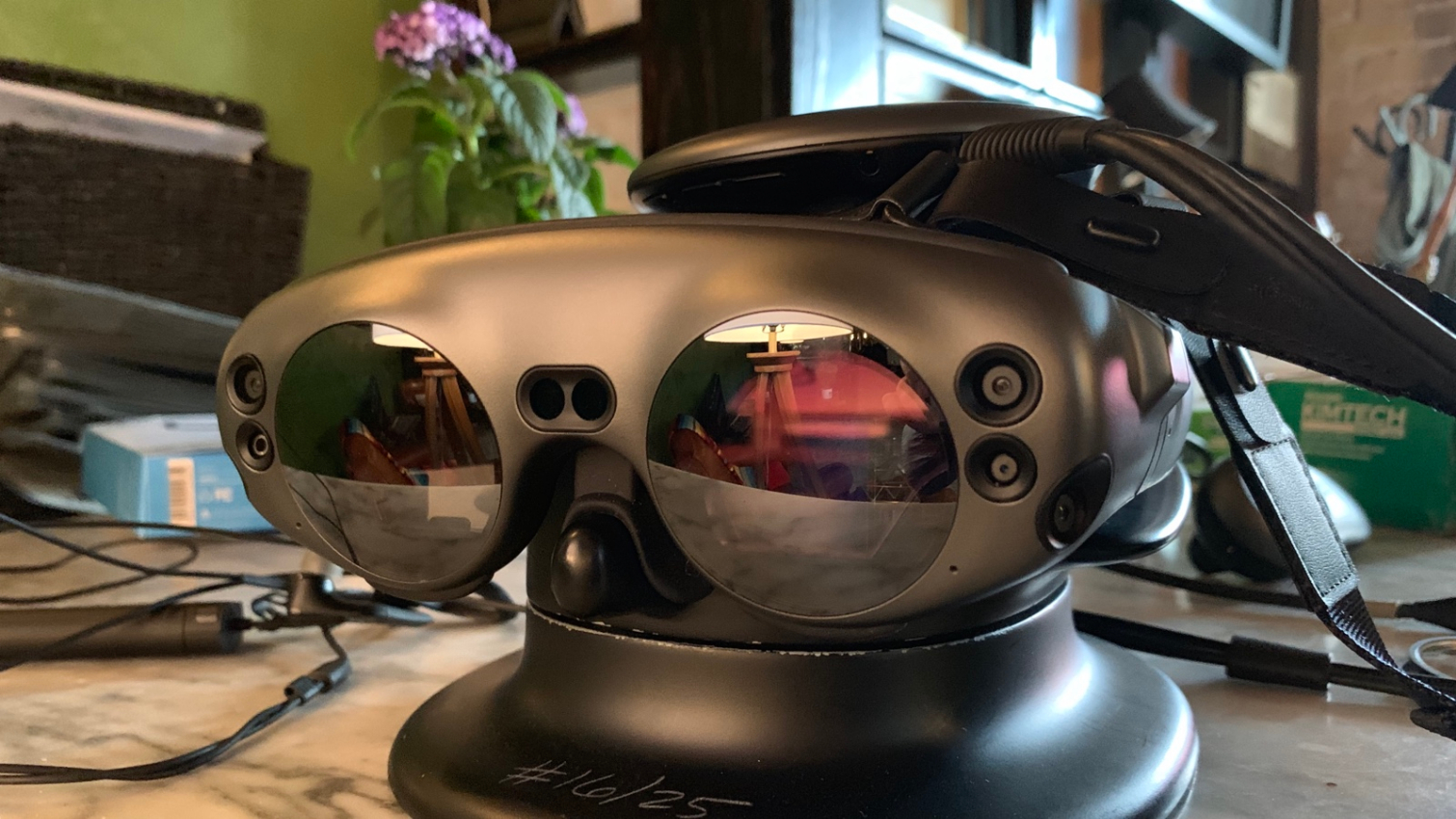Magic Leap AR at SXSW: What I Liked, What Needs Improvement
The Magic Leap AR glasses have been hard to find, but we finally got time with them to see where they excel and where they can grow.
AUSTIN, TX — At SXSW this year, I finally got some hands on time with the elusive, expensive Magic Leap augmented reality glasses, and walked away pretty impressed. So while the headset is still not for me — I was using the made-for-developers Magic Leap One Creator Edition — this experience both got me interested in the glasses' potential and confirmed reports of one of their frustrating limitations.

My favorite Magic Leap demo was called Tonandi, which creates a virtual world of alien fauna that moves and reacts to your touch. You experience this world by putting on the Magic Leap Goggles, and placing your hands into a ring of light that appears in front of you, and wait for it to spark and turn into an explosion.
MORE: Best Augmented Reality Apps
One of the best parts of Tonandi is the sound, as you hear bits and bobs of music as you interact with the alien life forms around you. Electronica fans will be more intrigued and interested in Tonandi, as the sounds come from the iconic and enigmatic Icelandic rock band Sigur Ros.
Wandering around, and inside of, Magic Leap demos feel like you're a step closer to the virtual future we were promised as children. The fauna literally rose out of the floor, and it felt about as close as I'll ever get to an alien planet.

I saw two other Magic Leap demos at a presentation from British Underground and Arts Council England, two organizations dedicated to the performing arts. The first was called The Grinning Man and featured a cast of characters that virtually appeared in the middle of the room on their own stage and performed a musical number from a Victor Hugo novel.
The characters looked slightly clay-like, with the lines of their bodies being a bit chunky, the next demo, a reading "The Seven Ages of Man" speech from William Shakespeare's "As You Like it" looked more realistic. In it, performer Robert Gilbert delivers a monologue in front of an ever-changing tree, whose particle effects were both a bit delightful and a reminder that I was watching a virtual performance.
Get instant access to breaking news, the hottest reviews, great deals and helpful tips.
The one thing holding Magic Leap back, though, is its small picture-box field of view, which leaves much of your peripheral vision empty of its AR works. I played through Tonandi twice because I got so focused on the range of the content I could see, and didn't notice how much more there was. I hope this limitation is resolved soon, as it hinders Magic Leap's potential.
And while I didn't mind wearing Magic Leap's small shoulder-strap-based battery/processor pack strapped across my body wasn't a problem, it's another thing I hope is reduced over time. But I'm looking forward to seeing Magic Leap launch as a full-blown consumer product.

Henry was a managing editor at Tom’s Guide covering streaming media, laptops and all things Apple, reviewing devices and services for the past seven years. Prior to joining Tom's Guide, he reviewed software and hardware for TechRadar Pro, and interviewed artists for Patek Philippe International Magazine. He's also covered the wild world of professional wrestling for Cageside Seats, interviewing athletes and other industry veterans.
